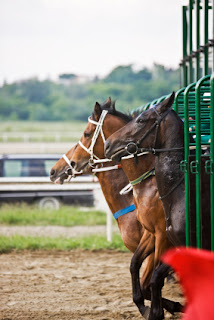Santa Ana Park Philippines
Horse racing is everybody’s favorite and I am too is an aficionado. My family and I always watch Philippine horse racing events at Santa Ana Park in Cavite. Because of love and passion, I researched the top horse racing venues by capacity in the world and I want to share it with you. Let’s start!
1. Tokyo Racecourse
 |
| Image Source: http://japanracing.jp/ |
Capacity: 223,000
Tokyo Racecourse is located in Tokyo Japan was the biggest horse racing venue in the world, accommodating 223,000 horse fans. It was built in 1933 for horse racing and considered as the “racecourses of racecourses in Japanese horse racing.
Tokyo Racecourse houses numerous Grade 1 races like the Japan Cup, Tokyo Yushun (The Japanese Derby), Tenno Sho, the Yushun Himba (Japanese Oaks), the February Stakes (G1), the NHK Mile Cup (G1) and the Victoria Mile (G1) and the Yasuda Kinen, which is a part of the Asian Mile Challenge.
2. Nakayama Racecourse
 |
| Image source: http://japanracing.jp/ |
Capacity: 165,676
Nakayama Racecourse built in 1990 in Funashiba, Chiba Japan was used for horse racing. It has two grass courses, dirt and a jump course. What is so special about this venue is that the jump course is very unique. It has several configurations that can be used in all races which horses must drop and climb over a steep embankment at the rear of the course. One specific configuration contains the two most difficult jumps on the course and is used only few times in a year, particularly for the Nakayama Grand Jump and Nakayama Daishogai races.
3. Hanshin Racecourse
 |
| Image Source: http://japanracing.jp/ |
Capacity: 139, 877
Hanshin racecourse is located in Takarazuka, Hyogo, Japan, built in 1949 shortly after the end of World War 2 and is mainly used for thoroughbred horse racing; the one of two large race courses in Western Japan, the other is the Kyoto Racecourse. These venues traditionally alternate their race meetings so that when one track is racing, the other is likely to be closed.
It has two turf courses, a dirt course and a jump course. Major races that happened here are the Takarazuka Kinen (G1), the Oka Sho (Japanese 1000 Guineas)(G1) the Asahi Hai Futuriy Stakes (g1) and the Hanshin Juvenile Fillies (G1).
4. Flemington Racecourse
 |
| Image Source: http://melbourneforeveryone.com.au/ |
Capacity: 130,000
Flemington Racecourse is a major venue for horse racing in Australia. It was built on March 1840 and is notable for hosting the Melbourne Cup which is the Aussie’s richest horse race. It is situated on low alluvial flats next to Maribyrnong River. It was added to the Australian National Heritage List on November 7, 2006 which was announced during the 2006 Melbourne Cup. It hosts many of the Aussie’s top races including the Melbourne Cup, VRC Oaks, VRC Derby, Newmarket Handicap, MacKinnon Stakes, Australian Cup and Lighting Stakes.
5. Epsom Downs
 |
| Image Source: http://www.racingsight.co.uk/ |
Capacity: 120,000
Epsom Downs is a Grade 1 Racecourse in Epsom, Surrey, England. The course is best known for hosting The Derby Stakes also known as the Epsom Derby, the United Kingdom’s premier thoroughbred horse race for three-year-old colts and fillies over a mile and a half or around 2400 meters.
It also hosts The Oaks Stakes a.k.a. Epsom Oaks for thee-year-old fillies, and the Coronation Cup for horses aged four year and up.
Future Plan
I want to visit these places in the next five years. I want to experience the culture, the festivity and the people. I really love horse racing that’s why I made Santa Ana Park Philippines my second home! I will update this blog once I visit each horse racing venues! For now, I’ll just keep enjoying the warm breeze of horse racing in Santa Ana Park!

